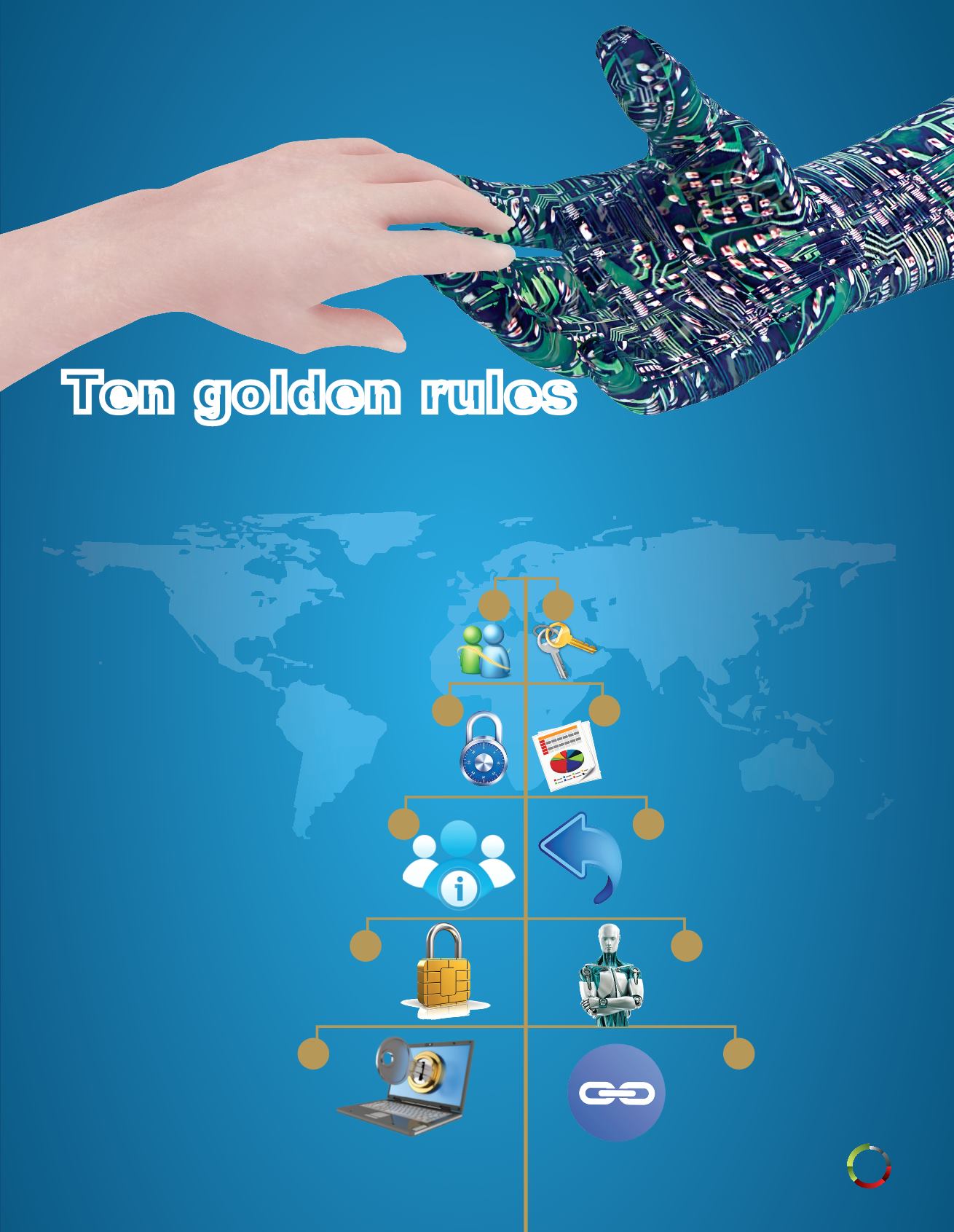
1 6
2
7
8
3
9
4
10
5
Ten golden rules
to protect yourself from identity theft
Online Identity theft is one of the biggest problems facing internet users around the world, especially with
the more sophisticated methods invented by thieves and pirates trapping more and more victims. To keep
users safe while using the internet, Gemalto, the international digital security company, provided ten basic
rules for users to stay protected online.
Educate yourself about how online identity theft happens
Cybercrime is increasing in sophistication and frequency. Make sure
you stay ahead by knowing what identity theft is about and more
importantly how to prevent it.
Consider a credit lock, or credit freeze
This slows your ability to borrow because you have
to suspend the lock, but it keeps people from open-
ing up your account and using your identity.
Monitor your credit reports
Get a monthly credit report, or at least get your
annual credit report online. When shopping
online, make sure your credit card details are
not stored online.
Avoid unauthorized sharing of mu-
sic and movies online
There is a high risk of getting malware
through music, movies and other
downloads, use only trusted sites at all
time.
Protect devices against
viruses, spyware, and other
malicious code
Use monitoring software to
ensure that virus protection is
running on your computer.
Always enter links (or use
your own shortcuts) to
banks, online retail-
ers, brokers or any
other trusted sites
Banks and other financial institutions
usually don’t communicate with their
customers via email. Do not click on
links in emails sent to you; always enter
the links for financial institutions.
Use strong authentication methods
Stay a step ahead of hackers by employing a layered security
approach. Two-factor authentication is the best tool to prove
identity; combining something you have along with something
you know, your username and a one-time password which en-
sures that a user name/password combination cannot be used
a second time.
Never give out personal information on the phone,
through the mail, or over the Internet, unless you
know that the person you are dealing with is trusted
Social fraud is increasing, so make sure you are in con-
tact with the right person. Ensure your passwords are
protected and that only you have access to it.
Use a smart card-based digital security device
for online payment or banking if available
Smart card based devices have strong authenti-
cation capabilities such as Public Key Infrastruc-
ture (PKI) certificates. This provides a device with
services ranging from encryption, digital signature
and private key generation and storage that
secure all types of online banking transactions for
both private and corporate users.
Physically secure your devices
A single stolen device can lead to access to
sensitive data and records. A lost or stolen
authentication device should be reported to
and blocked by the bank.
9
July
2014


